‘When we Rescued a Tigress from a Factory’: Experts Share Thrilling Details
Dr Mayukh Chatterjee, Head of Division, Human-Wildlife Conflict Mitigation from Wildlife Trust of India (WTI) and Sushant Soma, Field Officer (Biologist) Terai Tiger Project decode the tracks of a tiger in an abandoned rubber factory in Uttar Pradesh.

In early 2020, as the world leaders called for social distancing to control the spread of COVID-19, a 4-year-old Sharmili isolated herself in an old abandoned rubber factory in Uttar Pradesh’s Bareilly city. Spread over 1,200 hectares, the dilapidated factory was covered with dense vegetation and the nearest human settlement was less than a kilometre away.
Inside the labyrinth of trees, bushes and creepers, Sharmili found her safe haven with ample food, water and, most importantly, an undisturbed territory. The factory also housed wild animal species like blackbucks, wild boar, Nilgai, wild pigs, etc.
If you are wondering why Sharmili was content to be on her lonesome, now would be a good time to reveal that she is a tigress who came here from the Kishanpur sanctuary in the Lakhimpur Kheri district last year by crossing swathes of sugarcane and mustard fields.
This was neither the first time a big cat had entered the factory situated on disputed land nor will it be the last, unless a decision has been made on the factory’s status, and rescue operations are the only way to avoid human-animal conflicts.

After several attempts, Sharmili was rescued on 19 June 2021 and released into the Dudhwa National Park. However, this was unlike any other rescue operation, as the tigress carefully hid in plain sight and wasn’t noticed by the camera trap either.
However, Dr Mayukh Chatterjee, Head of Division, Human-Wildlife Conflict Mitigation from Wildlife Trust of India (WTI), says, “Capturing a wild cat is not the tricky part, tracking is.”
Mayukh had rescued a tiger from the factory in 2018 and says, “Identifying the tiger’s spot in a vast area like the factory is challenging in itself. It has a complex topography with no one knowing where the canals, roots, shrubs start or end. Though I know every inch of the area now, it was still difficult to rescue Sharmili. She was disappearing like a ghost despite the many cameras. In 2018, I remember telling the officials ‘phir milenge (we’ll meet again)’, as this place was and still is a boon for wild animals. Humans underestimate tigers who can hear prey calls from as far as 100 kilometres, so Sharmili’s entry was not surprising.”
Camera and pug marks are important means to find tigers. However, the factory’s surface was starkly different as there was no soil.
Additionally, when they discovered that the tigress could be holding up in a tank, the issue was to identify which one of the many tanks?
The rescue operation was conducted by experts from the Wildlife Trust of India and forest department officials of Bareilly and Pilibhit.
On the occasion of World Tiger Day, The Better India speaks to Sushant Soma, Field Officer (Biologist) Terai Tiger Project, who travelled to Bareilly and led the operation to rescue Sharmili for 20 days.
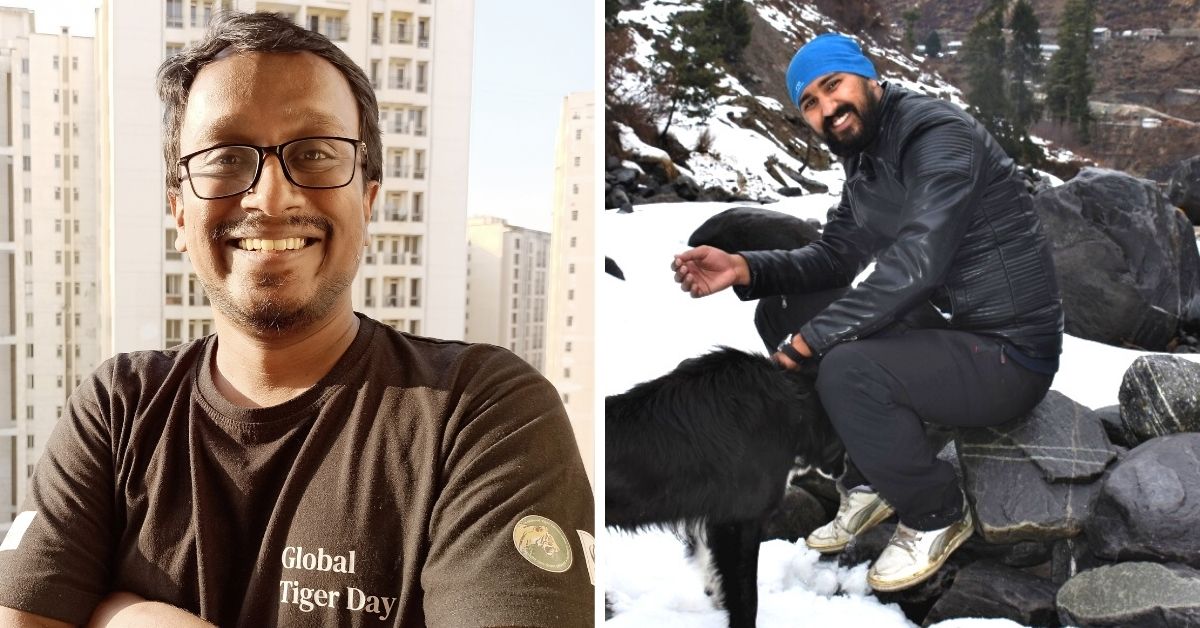
Finding Sharmili
Sushant joined the WTI in 2018 and since then he has been a part of multiple rescue operations.
Speaking about his experience with this rescue last year, he says, “I had just recovered from the coronavirus but I didn’t want to miss this once-in-a-lifetime opportunity. Even though I was informed about the factory’s condition in advance, my first on-ground impression was totally different. I reached the area on 17 May 2021, analysed the old camera traps for movement patterns and deployed my new camera trap,” says Sushant.
The movement and behaviour patterns of Sharmili were completely different.
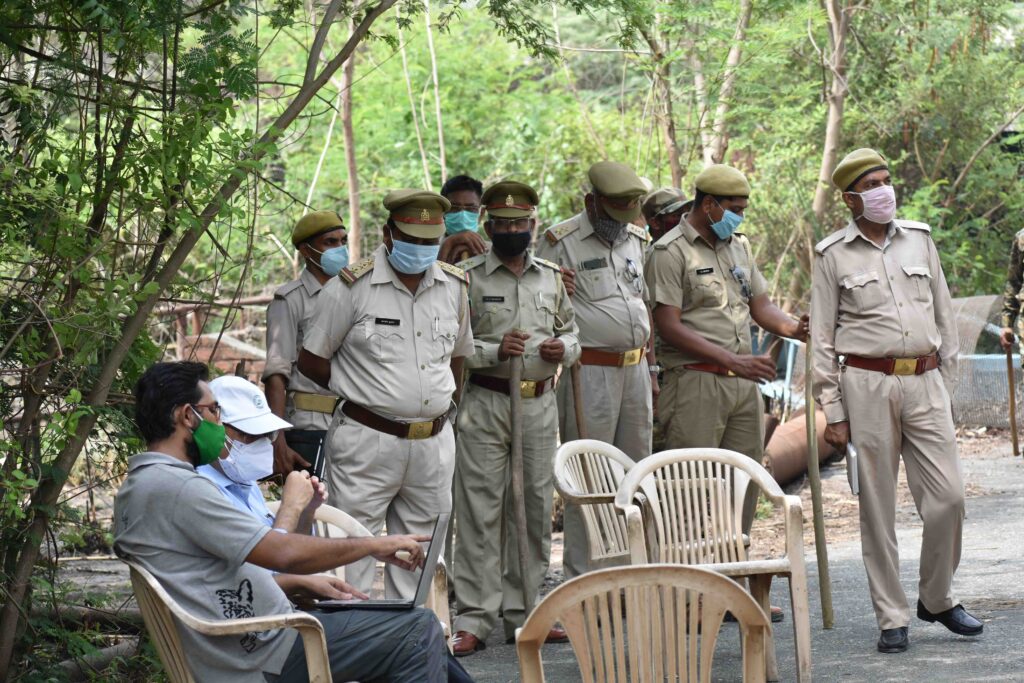
He placed 24 soil pads in various locations to capture pug marks and covered the area with nets to safeguard the tigress and villagers from each other.
“We recorded her pug marks from 4 am to 10 am and then again from 3 pm to 7 pm. Several days passed by observing her movement, timing, preying spots, resting locations. The thrill and anticipation of finding new leads and clues daily kept us going. For instance, in several videos, her back was wet, which meant she was living in a compact area with water.
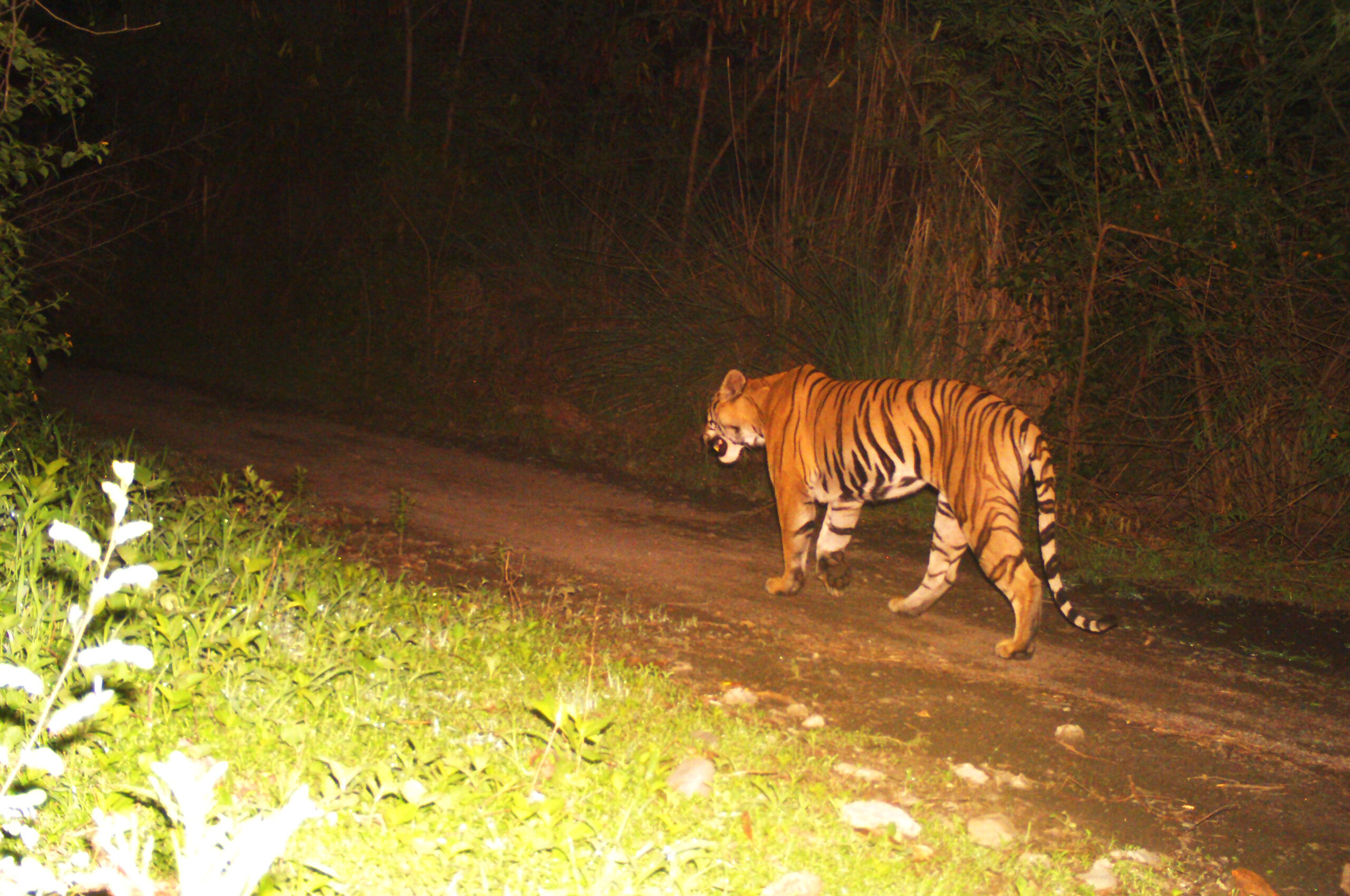
The team finally established a pattern based on where she started and ended her day. It was near a group of old rusty tankers amidst dense scrub vegetation. The preying area and monkey calls confirmed the same.
“After zeroing in on her location, we set up a net on one side to block her path, ensuring there was only one way to enter the tank. We deployed more cameras there and the next day, the camera captured her passing through. However, the most interesting confirmation came via alarm calls from a troop of rhesus macaques, whose ability to recognise predators is impeccable,” says Sushant.
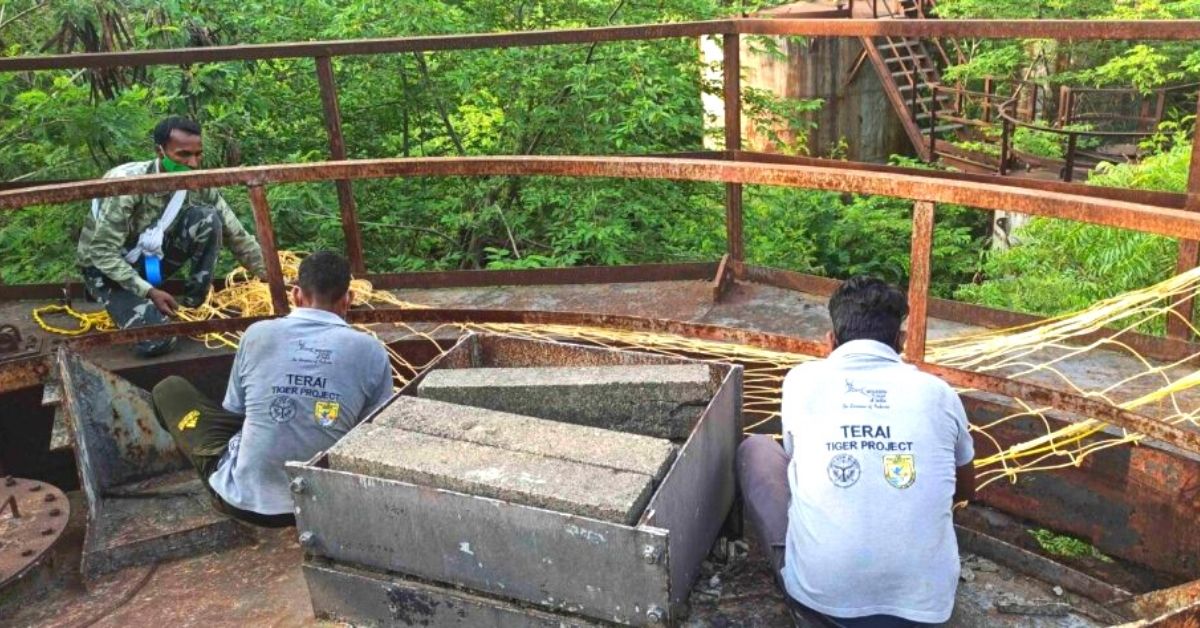
The next task was to identify which tank was housing Sharmili out of the five to six tanks in the factory. The team examined each tank and their one-and-half-feet wide circular inlets at a height of 5-6 feet. The openings of all tanks were covered in cobwebs except one, which also had trails of tiger hair.
Sushant informed Dr Mayukh, who was providing technical expertise from Delhi.
“My biggest learning in the 2018 operation was to think like a tigress. They are the most vulnerable when resting and they always choose a safe spot. So our team looked for signs where the nocturnal animal’s movement ended in the morning and came to a specific spot. Based on the cobwebs and hair on the edges, I told them it was safe to set up the camera trap around it. On the morning of 17 June, Sharmili was captured moving towards that tank on camera. The team didn’t disturb her movement and carried out the rescue operation the next day,” says Dr Mayukh.
The next morning the team reached the spot at 4.30 am and checked the camera which showed Sharmili entering the tank but not exiting it. In total silence, the team set up nets and a cage to block the entrance. However, she didn’t come out of the tank so their effort was in vain. A day later, Dr Daksh Gangwar, WTI’s former team member, now a veterinarian with the Pilibhit Tiger Reserve, sedated and removed her with an earthmover. She was safely released in the Dudhwa Tiger Reserve on the same day.
Changing the Modus Operandi
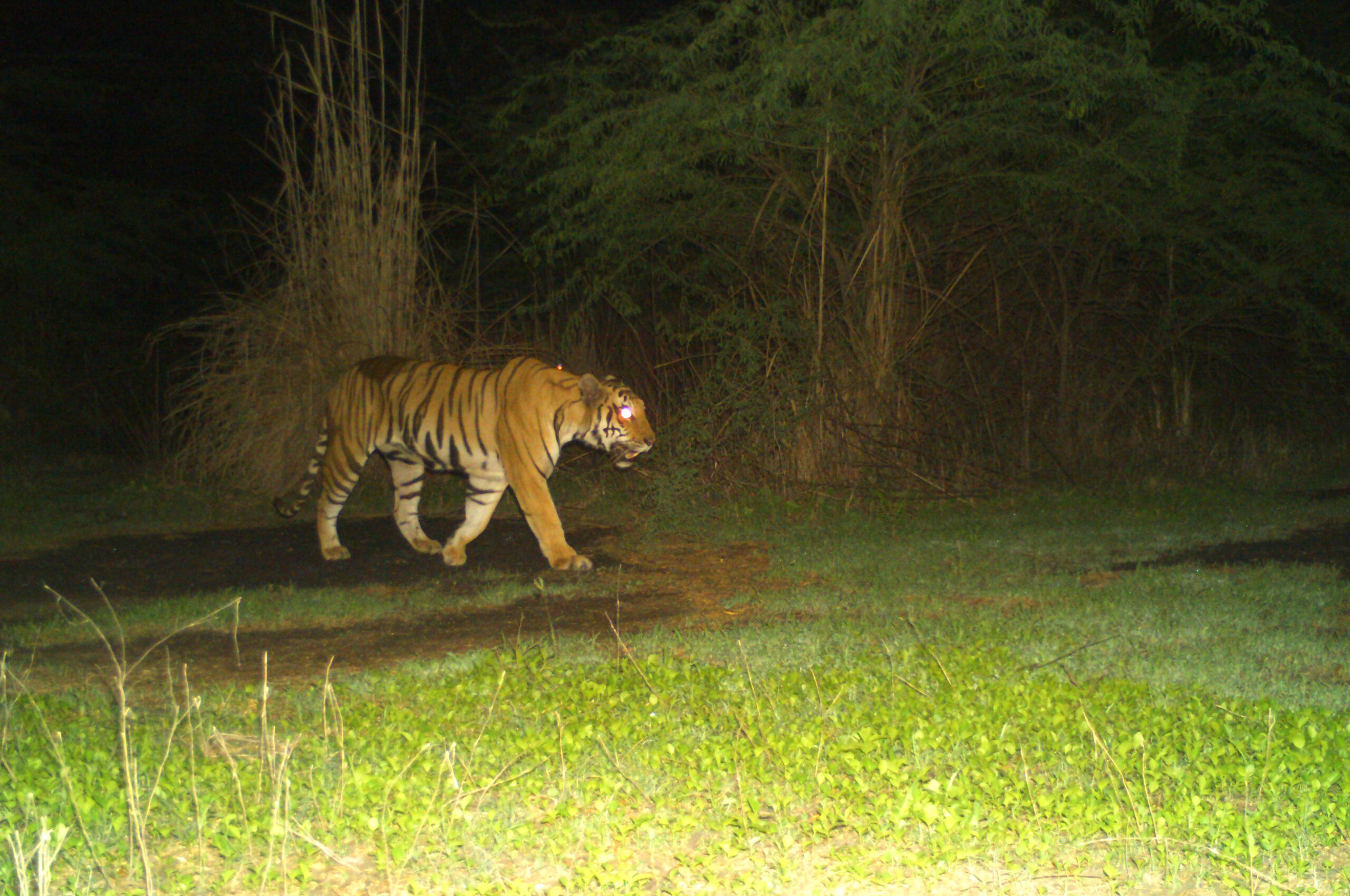
For the past couple of years, the WTI has been shifting from the usual operation protocols to focus on solving man-animal conflicts without rescue operations.
“Almost 50-60 per cent of our conflict resolution cases in the last five years have been solved without capturing wild animals. We do this by changing people’s perceptions through awareness. Humans walk into their personal spaces that lead to accidental encounters. Simple things like steering clear from their path, not openly defecating in the night, not cutting down forests, can go a long way,” says Dr Mayukh.
Echoing his message, Sushant adds that we need to co-exist with animals. He says, “In my rescue experience, I have observed tigers are adapting quickly to their surroundings like in the case of Sharmili. The fight for resources like land and forests have to end without always capturing or relocating the animals.”
Images are sourced from Wildlife Trust of India
Edited by Yoshita Rao
If you found our stories insightful, informative, or even just enjoyable, we invite you to consider making a voluntary payment to support the work we do at The Better India. Your contribution helps us continue producing quality content that educates, inspires, and drives positive change.
Choose one of the payment options below for your contribution-
By paying for the stories you value, you directly contribute to sustaining our efforts focused on making a difference in the world. Together, let’s ensure that impactful stories continue to be told and shared, enriching lives and communities alike.
Thank you for your support. Here are some frequently asked questions you might find helpful to know why you are contributing?


This story made me
-
97
-
121
-
89
-
167











